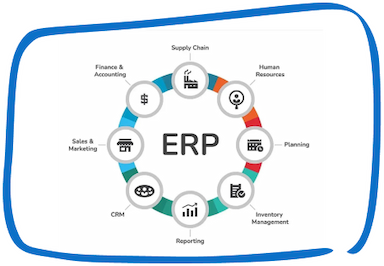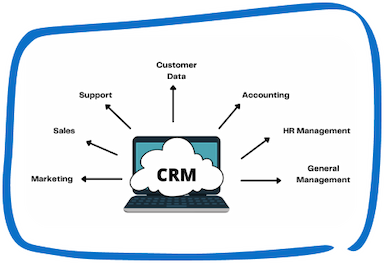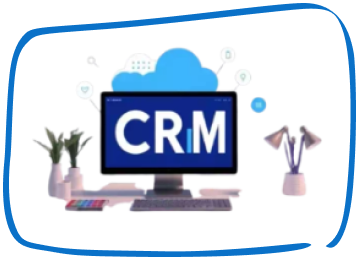One of a company’s most precious assets is its inventory. A company’s inputs and finished goods form the foundation of its operations in industries such as manufacturing, retail, food services, and others that involve a lot of inventory. When and where inventory is needed, a lack might be disastrous. Also, if you don’t grow with the world technology that will stagnate your growth. Thus, using inventory management software becomes one of the best solutions to expand your business.
Need for Inventory Management
We can also view inventory as a liability, albeit not in the traditional accounting sense. There is a chance that a huge inventory will spoil, be stolen, be damaged, or experience changes in demand. We need to insure inventory, and if it doesn’t sell quickly, we might have to destroy it or sell it at clearance prices.
These factors make inventory management crucial for companies of all sizes. It can be difficult to decide when to replenish inventory, how much to buy or manufacture, how much to pay, when to sell, and how much to sell for. Small firms frequently use spreadsheet (Excel) formulas to calculate the quantities and reorder points and to manually track their inventories. Specialized enterprise resource planning (ERP) software is used by larger enterprises. Highly customized software as a service (SaaS) applications are used by the biggest companies.
Streamline Your Business with Inventory Management Software
Track stock levels, manage orders, and optimize your supply chain with our efficient inventory management software. Reduce waste and ensure you always have the right products at the right time.
Inventory management encompasses a set of methods, procedures, and technologies for ordering, delivering, and maintaining inventory. To reduce losses and increase revenues, inventory control is crucial, which is why inventory management techniques are useful.
It’s not simple to choose the best inventory management strategies for your company, but with the correct strategies, owners may cut expenses, maintain profitability, forecast future sales, analyze sales trends, and get ready for unforeseen events.
These are the most widely used and successful inventory management techniques that could help your system.
ABC analysis
We refer to Always Better Control Analysis as ABC analysis. We use three categories to classify inventory items:
There are three categories: high-value items with low sales frequency (Category A), moderate-value items with moderate sales frequency (Category B), and low-value items with high sales frequency (Category C).
ABC analysis determines the items you need to stock less frequently and those you need to restock more frequently. ABC analysis lowers obsolete inventory and maximizes your inventory turnover rate.
Economic order quantity (EOQ)
This technique aids in estimating the quantity of inventory that you need to order. It accomplishes this by accounting for the product’s cost and demand. The use of this strategy may decrease costs associated with inventory purchases, shipping, and storage.
FIFO and LIFO
There are two ways to calculate the cost of inventory: LIFO and FIFO. According to the First in, First out (FIFO) technique, take out the first item on the inventory first. FIFO helps keep the inventory current.
The Last-in, First-out (LIFO) approach advocates taking out the last item in the inventory as the first one. LIFO aids in preventing the spoilage of inventory.
Fast, slow, and non-moving (FSN) analysis
Sorting things according to their amount, rate of consumption, and rate of inventory utilization is the foundation of the FSN inventory approach. There are three categories for items: non-moving, slow-moving, and fast-moving.
- Fast Moving (F): Items with a high frequency of usage fall under this category.
- Slow Moving (S): Items with a slow usage frequency fall under this category.
- Non-Moving (N): Users utilize these items for a limited amount of time.
FSN analysis aids in making decisions about inventory management. For example, what order to put things in the warehouse. For instance, you could position quickly moving objects in an accessible area. It can also assist in identifying which things are slow-moving and expensive to keep, as well as which items might need to have their ordering plans changed.
Just in time (JIT) method
Many businesses employ the “just in time,” or JIT, strategy to prevent the costs associated with overstocking. Using this tactic, they place orders for just what they require to satisfy demand right now. The business saves money on insurance and storage since it doesn’t have any extra inventory on hand. When the old inventory is almost empty, the corporation places new orders for inventory. This approach carries some risk because a small delay in placing an order for additional inventory could result in a stock-out scenario. Therefore, to place fresh orders on time, one must properly plan this procedure.
Optimize Your Inventory with Smart Management Software
Stay on top of your inventory with real-time tracking, automated reordering, and insightful reporting. Perfect for businesses of all sizes looking to reduce costs and improve efficiency.
The Bottom Line
Your company’s inventory is its most valuable asset, therefore taking proper care of it will help you save money as well as generate it. If you do not use inventory management techniques, you will never succeed. Select the best inventory management strategies for your company. Now is the moment to take charge of your inventory control with inventory management software. We are here with the most reliable inventory management software that will automate all your inventory operations. Contact Penieltech to schedule a free consultation today.
Speak with Our Team!
4.9 Stars
1k+ reviews on






